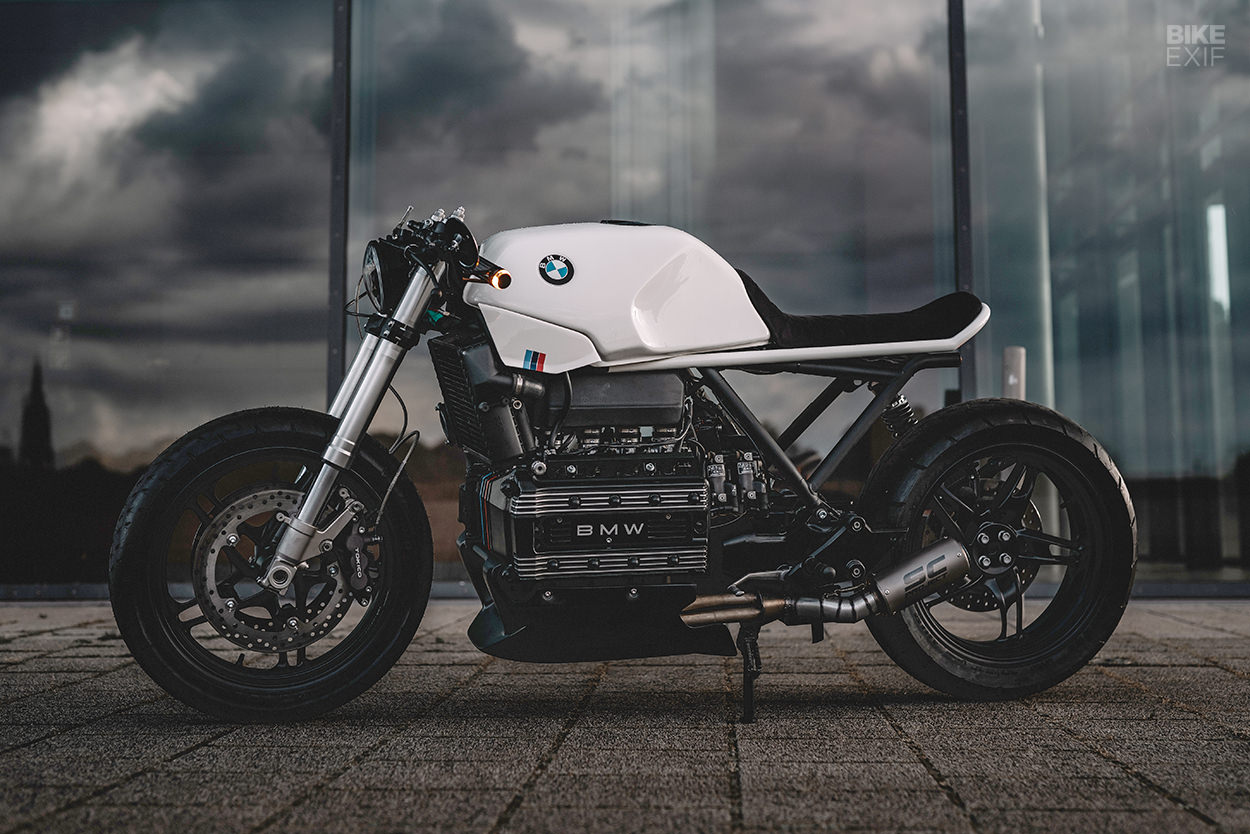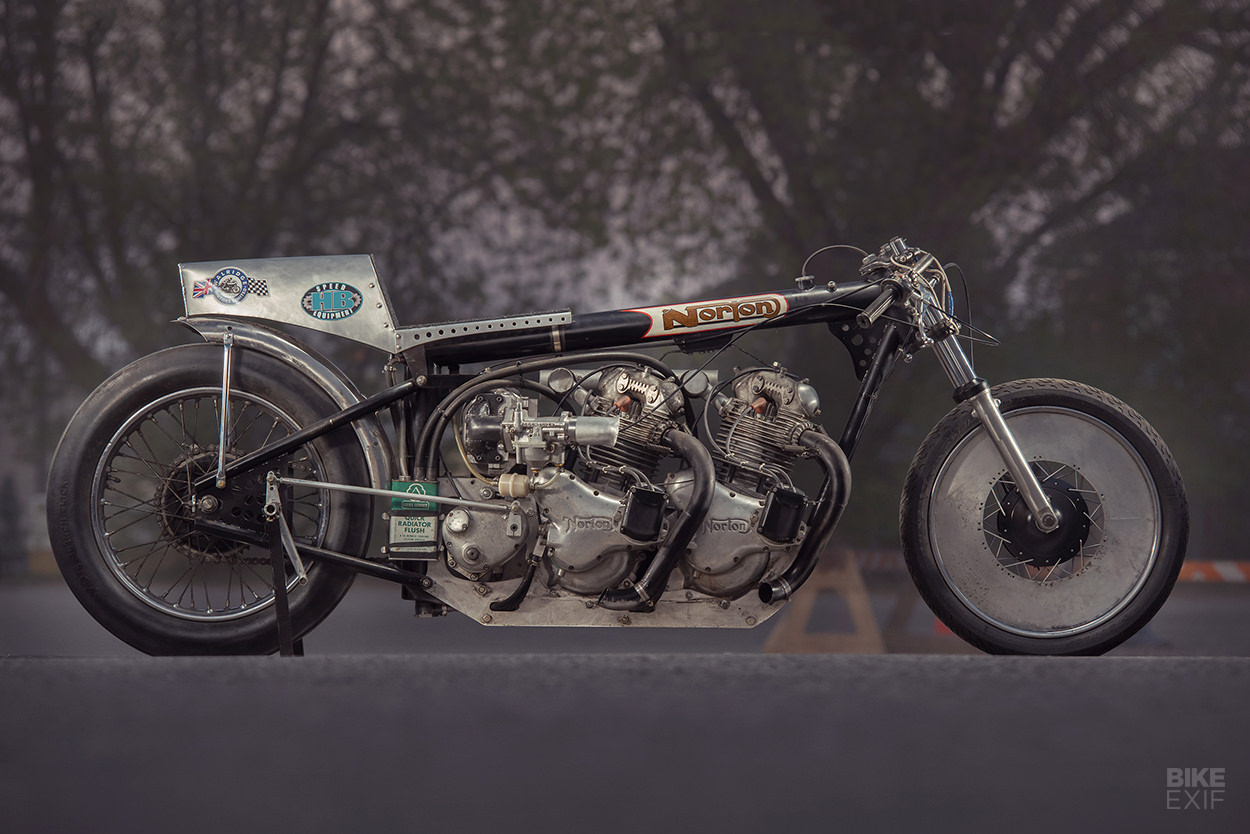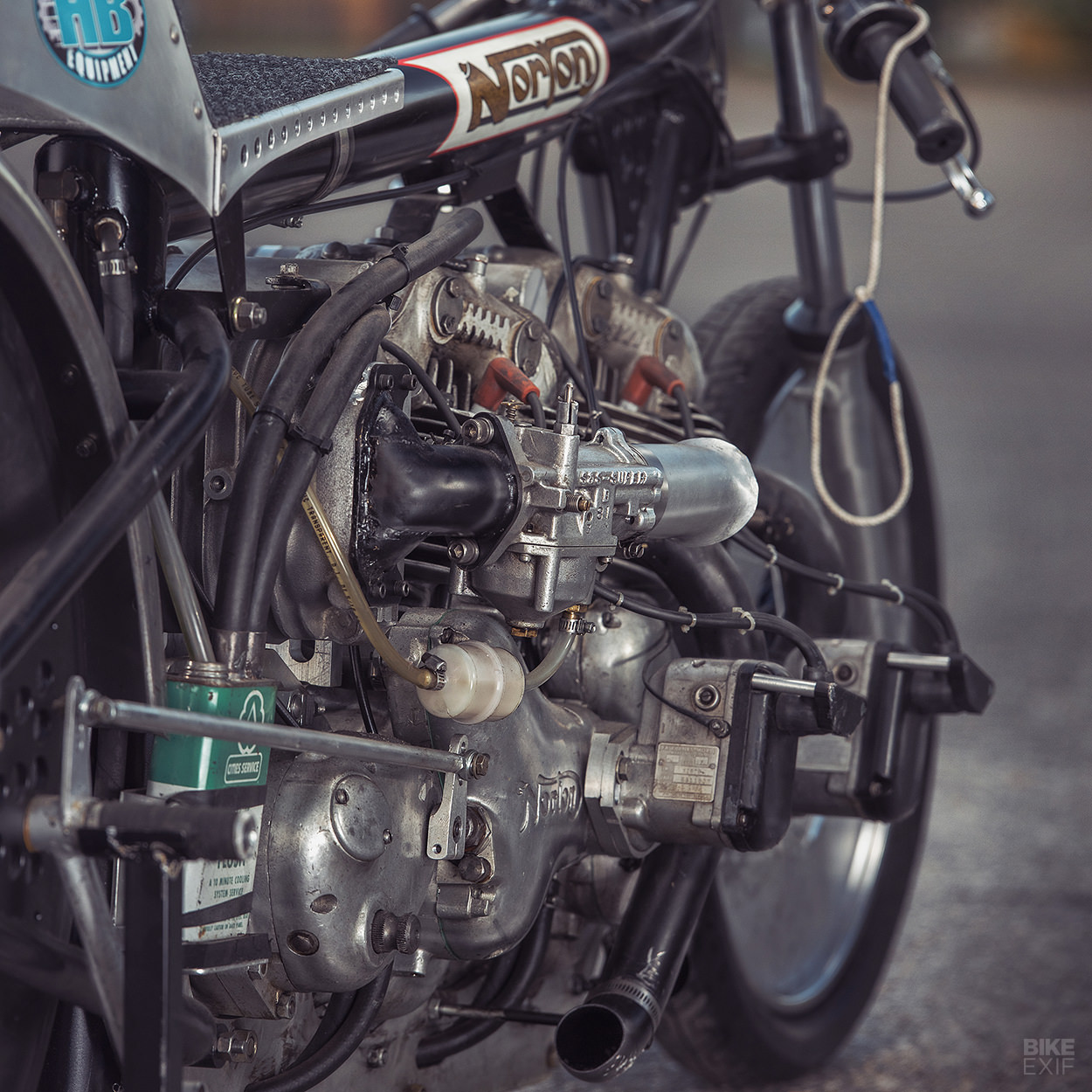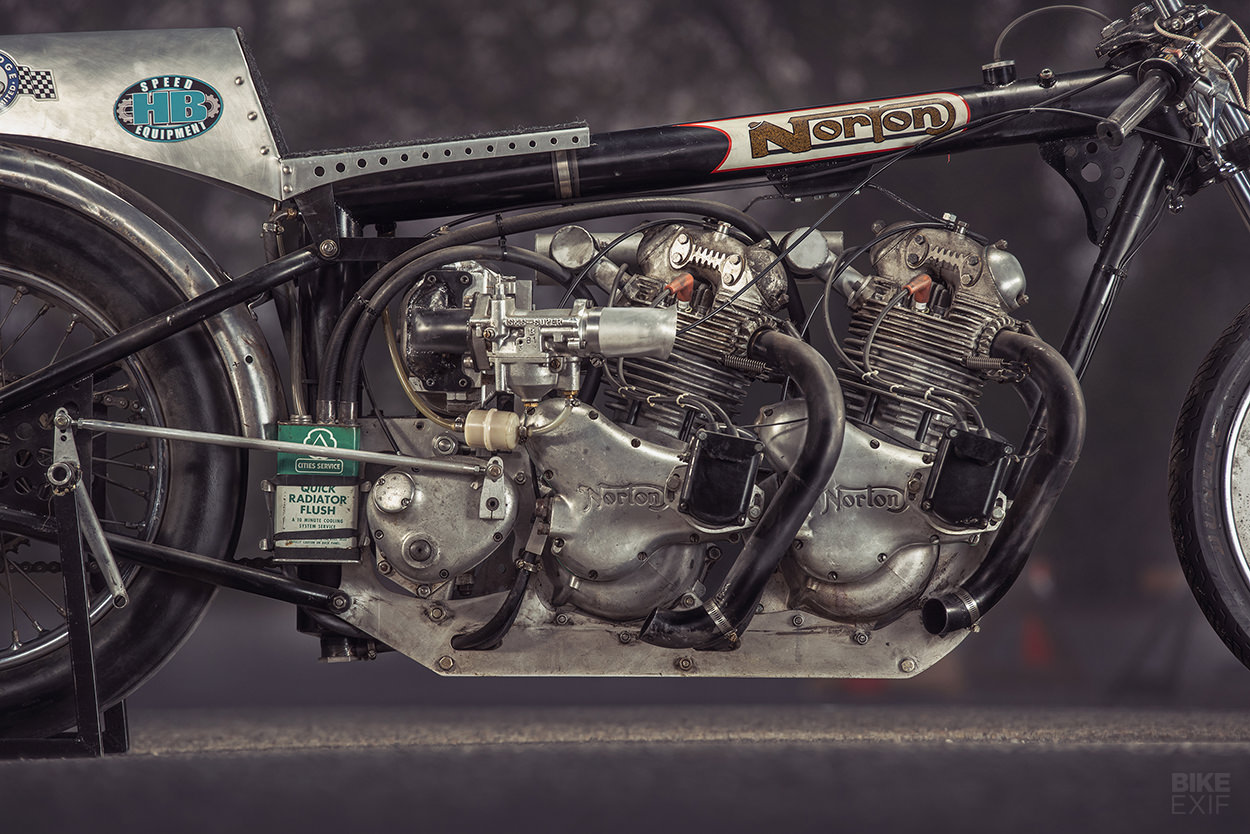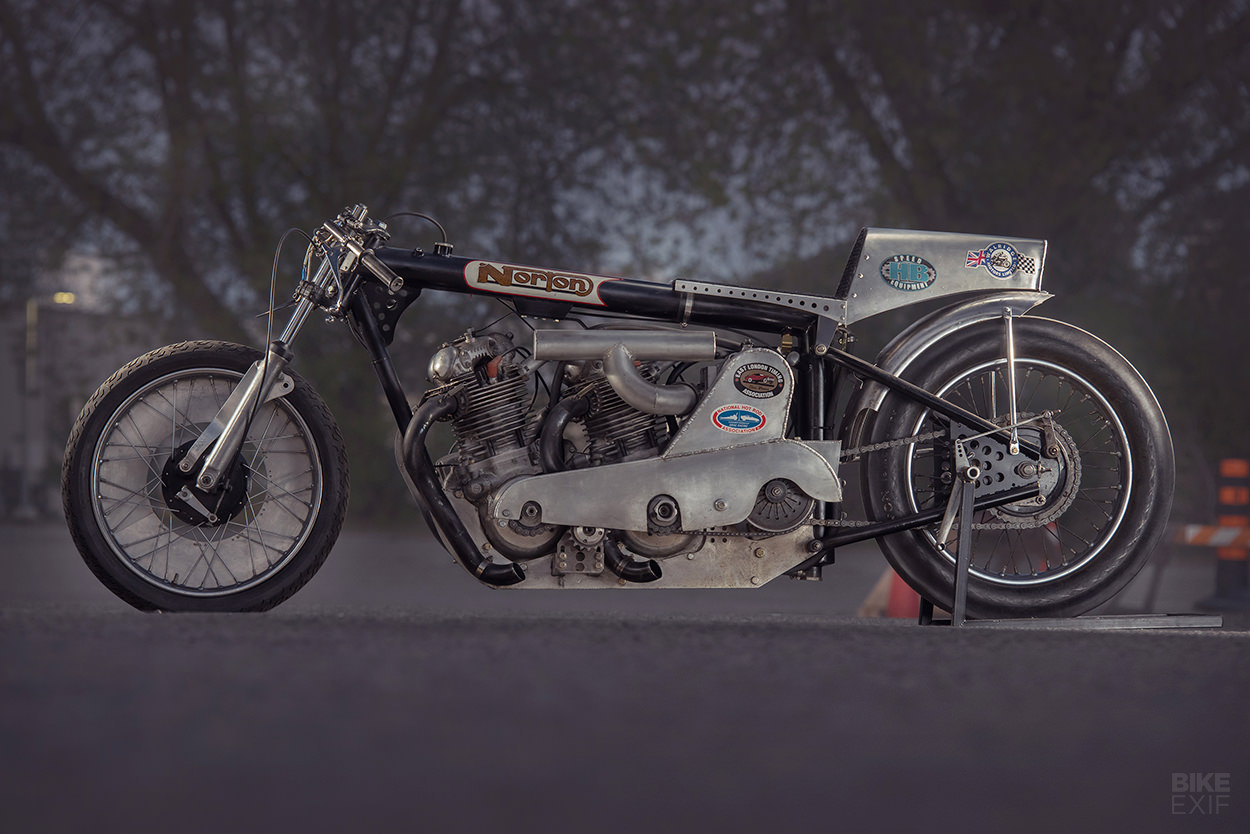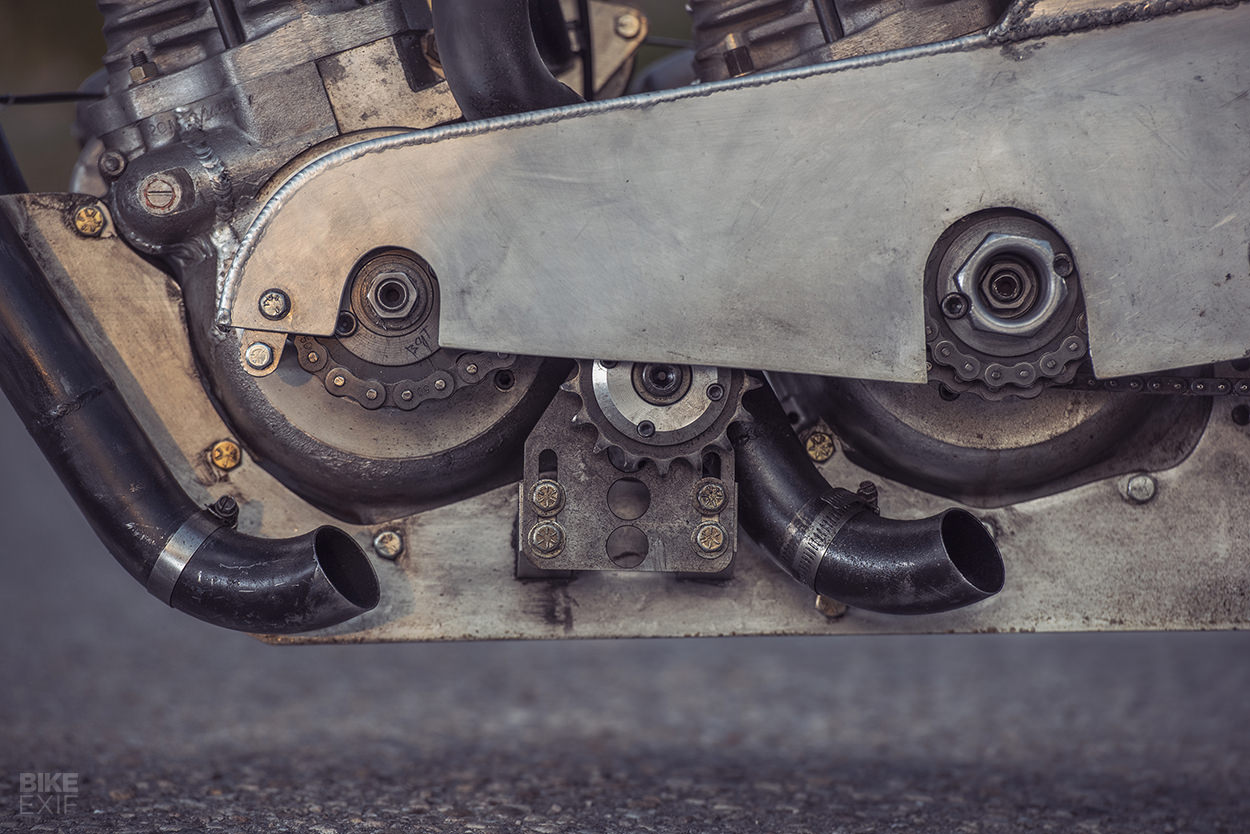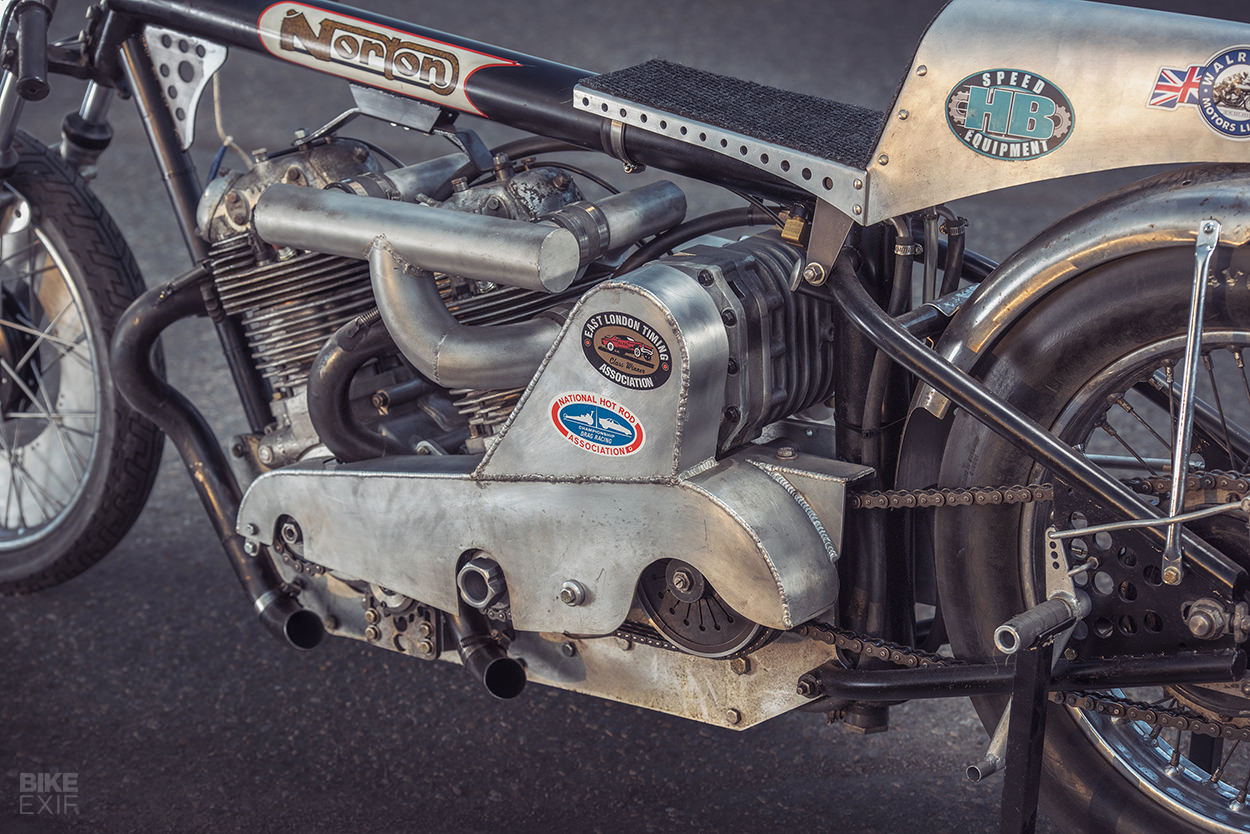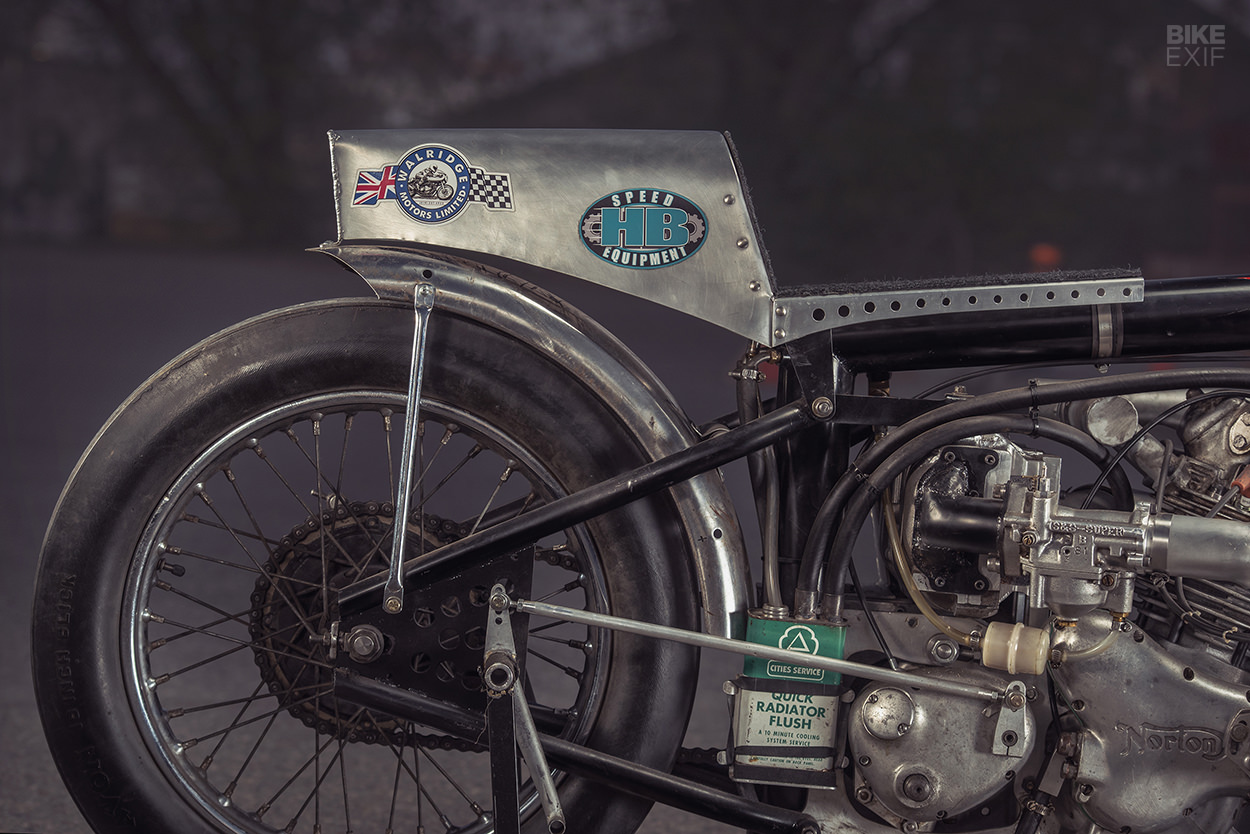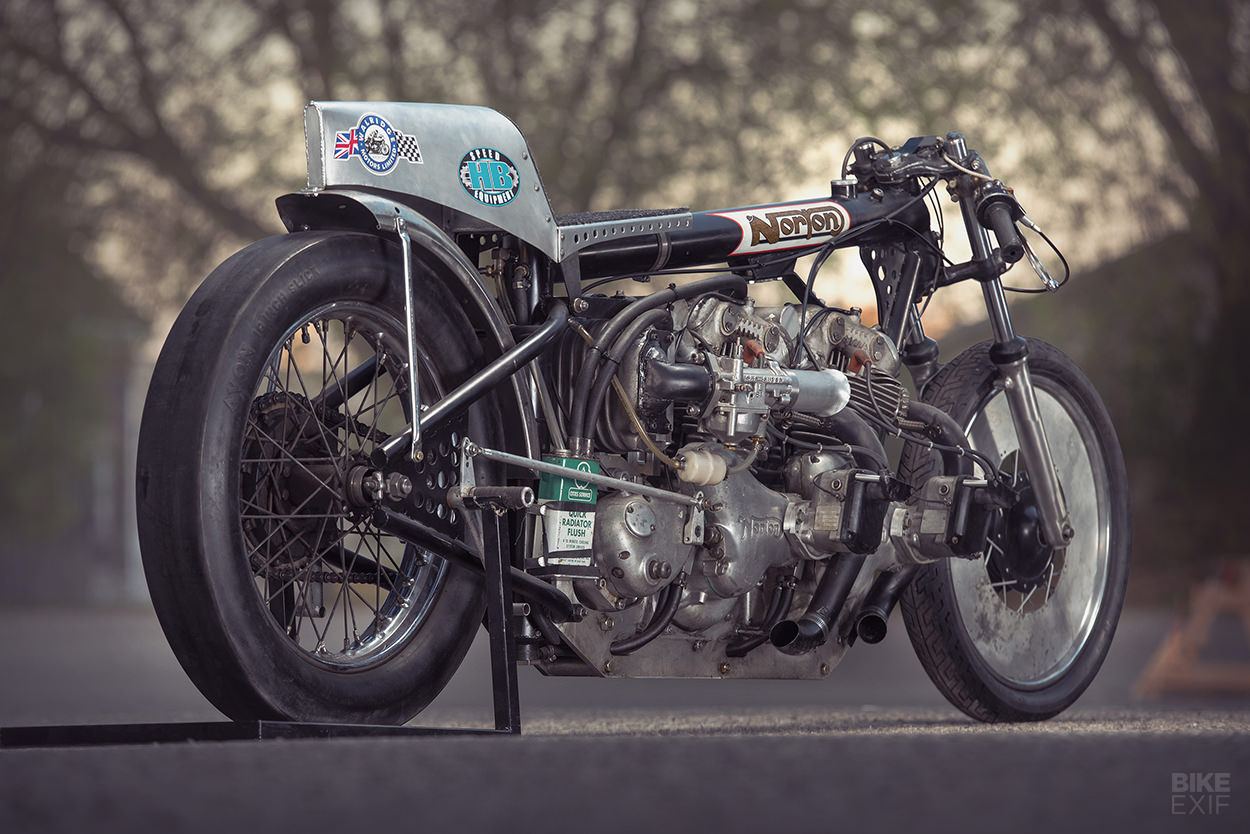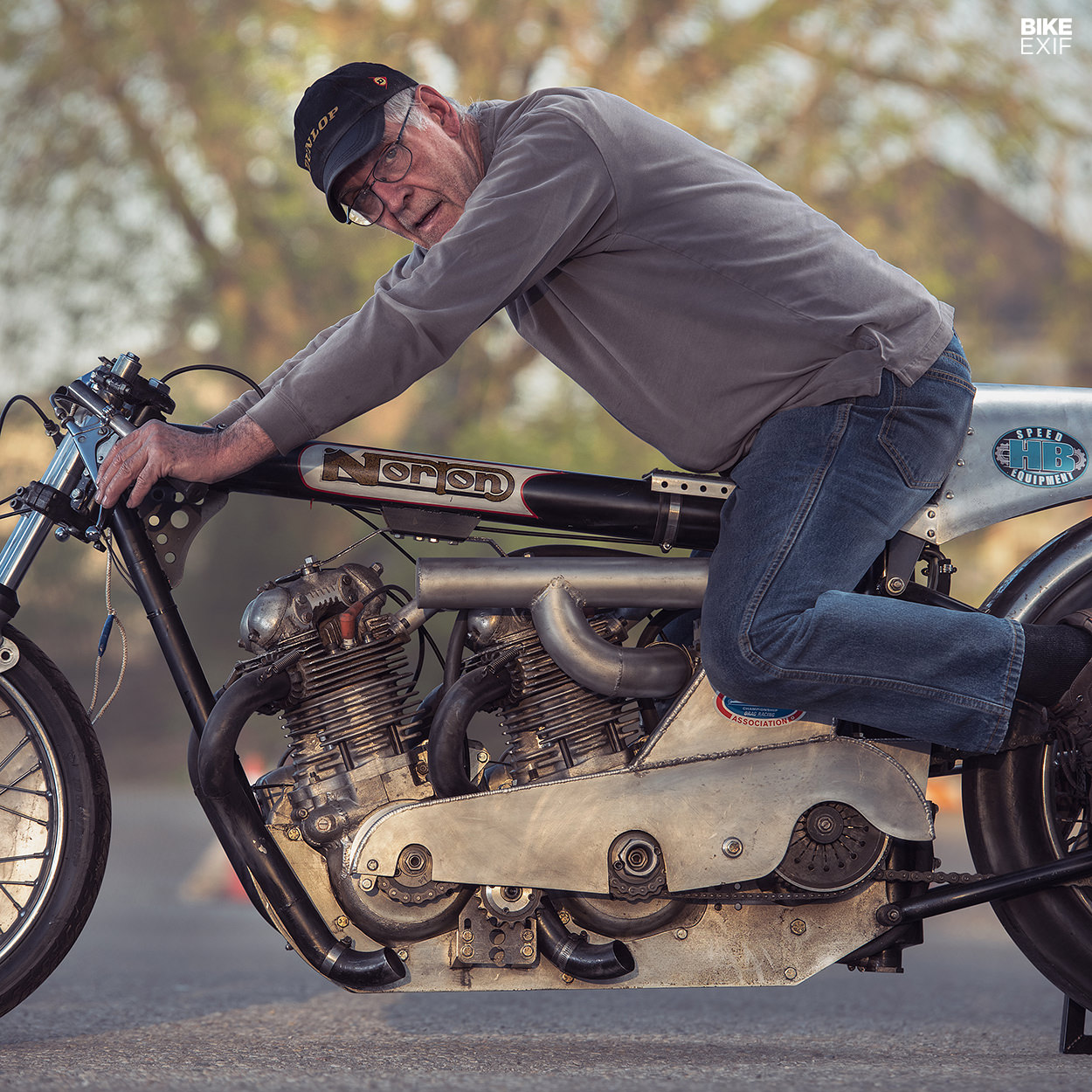Custom Bikes Of The Week: Best of The No Show
The global pandemic hasn’t just shut down big events like Intermot and EICMA—a slew of grassroots custom shows have hit the pause button too. To help fill the void,
Harley-Davidson put on The No Show, a weeklong Instagram-based showcase of top class builds.
H-D pulled their entries from the canceled Mama Tried, Congregation and Born Free shows, with a few international wild cards in the mix, totaling 60 bikes from the USA and abroad. Each bike was posted to
Harley’s Instagram account with a walk-around style video from the builder.
Bike EXIF was asked to join a small judging panel to pick the Media Choice Award winner. Alongside myself on the panel were American Iron’s Steve Lita, and my good friend Morgan Gales from Cycle World.
Here’s a look at the bike that took home that award, along with seven other builds that caught our eye.
Winner, Media Choice Award: 1963 Panhead by Ben ‘The Boog’ Zales To pick the Media Choice Award winner, each judge first came up with a shortlist, before we all hopped onto a group call to hash things out. As we ran through our individual picks, it quickly became clear that our tastes were vastly different.
In the end, there was only one bike that landed on all of our lists: this luscious 1963
Panhead from
Ben ‘The Boog’ Zales.
The fact that this build is almost entirely metallic paint and chrome, with a tiny seat and an even tinier fuel tank, is completely by design. Ben created it as a nod to the show bike era of the 60s; deliberately “all show and no go.” But the overall effect is so cohesive, and the details so well executed, that it’s impossible not to love.
Take note of how the tiny fuel tank (which Ben reckons holds enough fuel to get you to the next gas station) tapers and flows almost seamlessly into the frame, where a special junction has been shaped. Then notice how the seat reflects that shape back. Lift the seat up, and you’ll find that same teardrop effect in the custom-made oil bag, which is repeated again on the kicker pedal.
Ben [above] had some help: Dalton at Split Image Customs built the girder front end, and a friend, Mark, handled paint and the frame and tank molding. The front end is brakeless, leaving both the front wheel and the cockpit extremely barebones, since the bike also runs a foot clutch and a suicide shift (adorned with a crystal shift knob).
The amount of detail work is staggering, with highlights like a pop-up gas cap, and a rear fender stay that flares out to hold the exhaust. The H-D No Show was packed with good-looking motorcycles, but Ben’s Panhead was one of the few that we wished we could have seen in person.
Winner, Harley-Davidson Museum Award: 1940 Knucklehead by Christian Newman This Knucklehead also caught our eye—and the eye of Bill Davidson, and his team at the Harley-Davidson Museum. It features an all-stainless steel custom frame and fork, with a pretty trick oil-in-frame system, and a number of other tasty mods.
You can’t spot it from this side of the bike, but the sprocket and rotor actually sit on the outside of the frame. And
Christian modified the transmission too, using aftermarket case components and his handiwork to narrow it 2 1/2”. Even the girder front end is more complex than it first appears, with special offset risers that flow through the top yoke, and hold the headlight. [Photo by Brandon Fischer]
1927 Model J by Justin Walls At 93 years old, this is the oldest bike to make our cut, but it’s no precious antique.
Justin Walls originally built it for a friend as an entry into the Born Free show, where it took home an award. But in the years since, the friend has let Justin keep, maintain, and even race the old Model J.
Justin rebuilt the motor to 93 ci, with new flywheels, late model pistons, a custom cam shaft, custom valve pockets and new valves and springs. It sits in a 1929 frame with a shortened seat post, a reinforced rear end, and a reinforced JD front end. Justin built the split tanks as a nod to the classic hillclimber style—a vibe that carries through to the whole bike.
2016 XG750 by Dan Torres This relatively young
Street 750 from
Milwaukee Moto was one of the few bikes in the No Show that didn’t conform to a chopper or bobber style, so it immediately caught our eye. The most apparent change here is the running gear: Dan fitted a single-sided swing arm, a complete Yamaha R1 front end and new wheels.
It was no small task—particularly the swing arm and custom rear shock linkage, which reportedly took some doing to get right. Other changes include a Honda CB200T fuel tank and a custom-built tail section, with an external fuel pump hiding away behind mesh side covers. The twin exhaust system with its Cone Engineering mufflers is a nice touch too, and sounds bananas. [Photo by
Sergio Meza]
1975 Shovelhead by Chris Graves This quirky chopper is more than just an impossibly tall front end. Look closely, and you’ll notice that it’s running two front
Shovel heads, with twin Amal carbs and dual magnetos. Chris built it this way, simply because it’s an idea he always wanted to try … and the rest of the bike is full of touches that are just as out there.
The frame’s a fully custom chromoly job, with a pretty unique rear suspension system. It features a set of hand-built pivots right at the rear wheel that run on needle bearings, offering about 1 1/8” of travel (which Chris reckons is “just enough to take that sting away in your kidneys”). And there’s a custom air suspension setup under the seat, too, that can be raised and lowered electronically. [Photo by
Brian Redmond]
2017 Sportster Forty-Eight by Rajputana Customs The
Forty-Eight has a great stance out of the box, so
Rajputana didn’t mess with the bones of this one too much. Instead, the worked to improve everything else. It started with modifying the tank with new ribbed side panels, and then carrying that effect to the oil tank and other parts.
They also modified the exhaust heat shield with a drilled effect that carries through to the bash plate, and wrapped the forks and shocks in covers to emphasize the bike’s overall chunkiness. The bike features custom bars, risers, grips and foot pegs, and engraving on a number of smaller parts. Every detail ties in to another: like the hand-shaped sprocket cover that mimics the tank mount. [Photo by
Malhaar Chaturvedi]
1947 Knucklehead by Jordan Dickinson The inspiration for this build came from the Harley factory racers of the 30s and 40s. Jordan’s idea was to rework this 1947
Knucklehead to look like it was a factory concept bike from that era.
Achieving that meant keeping only the OEM motor and forks, and building the frame and bodywork from scratch. The forks weren’t left alone though—
Jordan narrowed them to slim down the overall profile. Details like the handlebars, exhausts and rear fork brace all shine, and parts like the motor mounts were actually machined, welded and finished to look like vintage forged parts. [Photo by
Heather Dickinson]
2018 Street Bob by Rough Crafts Winston Yeh is a regular fixture on our pages, so it was good to see his work pop up on the No Show roster. He’s got countless Harley builds under his belt, but it was ‘
Thunder Chaser‘ that made the show—a murdered-out
Street Bob with a flawless stance.
Highlights include the scalloped tank and ducktail rear fender, the flawless stance and those super-sano Arlen Ness fork legs. Winston added his own catalog risers that incorporate the Street Bob’s tiny LED speedo too, along with new bars, and a number of engine dress-up bits. There are also new wheels, and a
Rough Crafts / SC Project prototype exhaust system. [Photo by
JL Photography]
Harley-Davidson |
Instagram
Continue reading...

